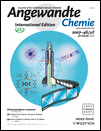Metal-Free Catalytic Hydrogenation
In their Communication the authors stated that “non-transition-metal catalysts for hydrogenation reactions are all but unknown.” However, it should be noted that non-transition-metal systems have been shown to effect hydrogenation under more forcing conditions. For example, DeWitt, Ramp, and Trapasso demonstrated hydrogenation with iPr3B under 67 atm (1000 psi) H2 at 220 oC.1 Similarly, Haenel and co-workers2 among others3 showed hydrogenation of coal under almost 148 atm (15 MPa) H2 and at 280–350 °C using BI3 or alkyl boranes. As well, superacid systems have also been shown to effect hydrogenation of alkenes at H2 pressures of at least 35 atm.4




